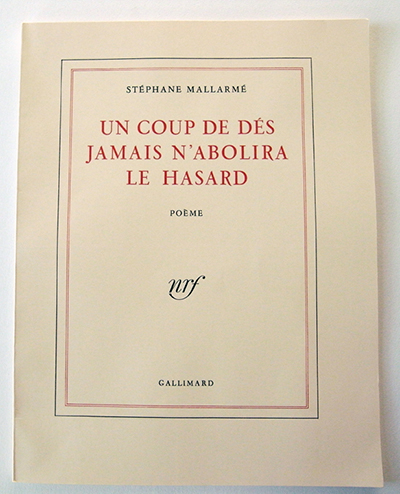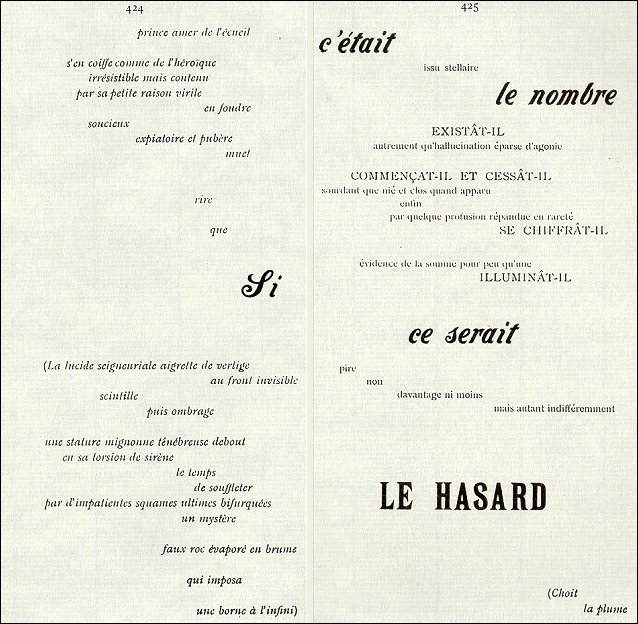Robert Gildea, Children of the Revolution
Symbolism in Literature
In the 188os a breach opened up between Realists and Impressionists on the one hand, who were committed to the  representation of modern life, and other artists whose ambition was to flee it, to search for meaning in some essence or ideal that lay behind the mask presented by reality, and were inspired by the primitive or the exotic, by myths and legends, by the spiritual and religious, symbols which seemed to permit access to an inner or unconscious world. Their art was modernist in form but was a critique of modernity -- the materialistic world of urbanization, industrialization, science, secularization and mass education.7 It was avant-garde, grouping like-minded intellectuals seeking new literary forms and sometimes challenging bourgeois conventions by a bohemian lifestyle. One of their early haunts was the salon of Nina de Callais, who had been painted by Manet in 1874 as The Woman with the Fan. The poet Paul Verlaine, who had been a clerk in the Hotel de Ville before the Paris Commune, met the sixteen-year-old Mathilde Maute there in 1869 and married her in order to escape military service. She later
admitted that she was 'overcome by pity for a poor being with disgraceful appearance and who seemed sad'.8 In fact he was a spoiled child, alcoholic and violent. Obsessed by the brilliant young poet Arthur Rimbaud who arrived in Paris in the autumn of 1871, he tried to strangle his wife, threw his three-month-old baby against the wall and ran away to Brussels with Rimbaud. In 1873 he shot Rimbaud in the hand during another 1 row and spent two years in a Belgian prison, after which his wife separated from him and Rimbaud went to Africa to trade in ivory or guns, according to the rumour. Briefly reforming himself, he published a collection of his own work and that of Rimbaud and Mallarme, Les Poetes maudits, in r883, which for the first time put this new generation of Symbolist poets on the map. He was then jailed again for an attack on his mother and spent much of the last years of his life in hospital.
representation of modern life, and other artists whose ambition was to flee it, to search for meaning in some essence or ideal that lay behind the mask presented by reality, and were inspired by the primitive or the exotic, by myths and legends, by the spiritual and religious, symbols which seemed to permit access to an inner or unconscious world. Their art was modernist in form but was a critique of modernity -- the materialistic world of urbanization, industrialization, science, secularization and mass education.7 It was avant-garde, grouping like-minded intellectuals seeking new literary forms and sometimes challenging bourgeois conventions by a bohemian lifestyle. One of their early haunts was the salon of Nina de Callais, who had been painted by Manet in 1874 as The Woman with the Fan. The poet Paul Verlaine, who had been a clerk in the Hotel de Ville before the Paris Commune, met the sixteen-year-old Mathilde Maute there in 1869 and married her in order to escape military service. She later
admitted that she was 'overcome by pity for a poor being with disgraceful appearance and who seemed sad'.8 In fact he was a spoiled child, alcoholic and violent. Obsessed by the brilliant young poet Arthur Rimbaud who arrived in Paris in the autumn of 1871, he tried to strangle his wife, threw his three-month-old baby against the wall and ran away to Brussels with Rimbaud. In 1873 he shot Rimbaud in the hand during another 1 row and spent two years in a Belgian prison, after which his wife separated from him and Rimbaud went to Africa to trade in ivory or guns, according to the rumour. Briefly reforming himself, he published a collection of his own work and that of Rimbaud and Mallarme, Les Poetes maudits, in r883, which for the first time put this new generation of Symbolist poets on the map. He was then jailed again for an attack on his mother and spent much of the last years of his life in hospital.
 For Symbolists the most important meeting-place was the salon of Stephane Mallarme. Mallarme, who made a living teaching English in a succession of lycees in the provinces and Paris, organized his own literary salon on Tuesdays at his house in the rue de Rome. From 1885 it became the focal point for young writers of a new generation born around 186o who experimented with elegar but opaque and suggestive forms of language. Where Verlain destroyed bourgeois domesticity, Mallarme incarnated it, although as poets they had the same ambitions. 'The wife and daughter embroidered under a dim lamp,' wrote one of his disciples, Paul Valery. 'He smokes a pipe in a rocking-chair, eyes half closed , voice very low. Then suddenly his eyes are wide open and he raises his voice, panting. He becomes a savant in a moment, now epic, now tragic.'9 Other disciples of this rarefied salon were Jules Laforge who died of tuberculosis aged twenty-seven in 1887, Henri de Regnier, Felix Feneon, Maurice Barres, the musician Claude Debussy, the novelist Andre Gide, the German poet Stefan Geore and 'the execrable Oscar Wilde who should have grasped from our mute reprobation', said another disciple, 'that one did not come to Mallarme's to make speeches'.
For Symbolists the most important meeting-place was the salon of Stephane Mallarme. Mallarme, who made a living teaching English in a succession of lycees in the provinces and Paris, organized his own literary salon on Tuesdays at his house in the rue de Rome. From 1885 it became the focal point for young writers of a new generation born around 186o who experimented with elegar but opaque and suggestive forms of language. Where Verlain destroyed bourgeois domesticity, Mallarme incarnated it, although as poets they had the same ambitions. 'The wife and daughter embroidered under a dim lamp,' wrote one of his disciples, Paul Valery. 'He smokes a pipe in a rocking-chair, eyes half closed , voice very low. Then suddenly his eyes are wide open and he raises his voice, panting. He becomes a savant in a moment, now epic, now tragic.'9 Other disciples of this rarefied salon were Jules Laforge who died of tuberculosis aged twenty-seven in 1887, Henri de Regnier, Felix Feneon, Maurice Barres, the musician Claude Debussy, the novelist Andre Gide, the German poet Stefan Geore and 'the execrable Oscar Wilde who should have grasped from our mute reprobation', said another disciple, 'that one did not come to Mallarme's to make speeches'.